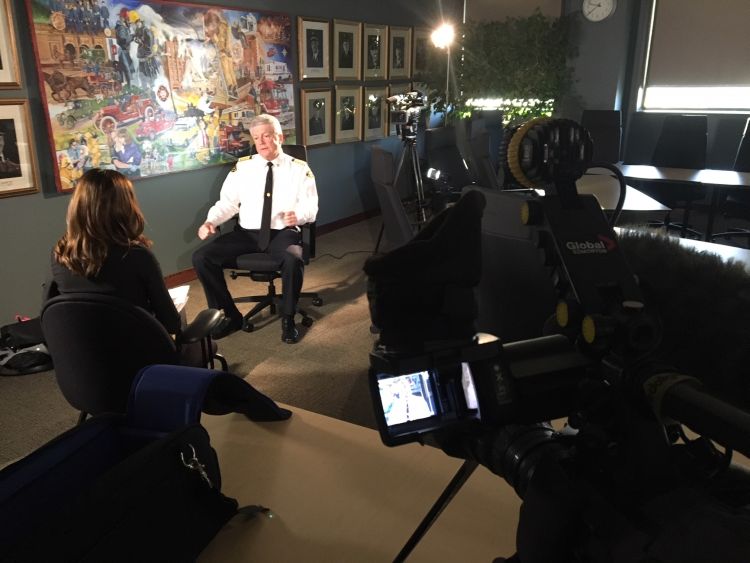If opioid overdose detection and treatment dominated the headlines for Edmonton Fire and Rescue in 2017, improving emergency preparedness is the next looming flashpoint.

Fire Chief Ken Block said work has been ongoing for the last couple of years to play catch up with what’s going on.
“I have the privilege of being very engaged internationally. Typically, I find Canada is about five years behind what occurs in the U.S.,” Block said. “We’re a part of this whole global shift and I think we can expect what’s been occurring in the last number of years in the U.S. to start to be reflected here at home.”
“It’s one of the reasons we’re building a new operations centre,” said Mayor Don Iveson in his annual year end interview. “In the event of a crisis we can effectively coordinate the response from all of the different agencies.”
WATCH: Edmonton fire chief talks about preparing for emergencies
The operations centre is scheduled to be completed in 2020, according to the province’s major projects website. The price tag has been revised down to $18.2 million, and it’s to be located at 12825 – 185 Ave.
Eventually it’ll replace the current centre tucked in behind Rogers Place that Iveson described as adequate to handle today’s emergencies.
“It’s going to be a couple of years before it opens so we can certainly use the existing emergency operations centre in that time, but it’s approaching its end of life and obsolescence. We’ve seen what the new centre in Calgary has helped them do in particular, the response to the floods, it was critical. As a result of that we saw the urgency.”
READ MORE: First responders in Alberta urge public to be prepared for disasters
City run, the new centre will be pressed into action if there’s a crisis that affects the entire metro region.
“We’re really increasing the interaction,” Block said. “Not only with internal partners within the city, but also external stakeholders like the RCMP, like Alberta Health Services, just ensuring the best emergency planning measures are in place and that they’re exercised and that should something occur we’ll be well prepared and well placed to respond to it on behalf of our citizens.”
Block added there’s more awareness about the need to be prepared.
“We’re talking now about awareness training, having a look at best practices, how we interact with law enforcement agencies on the scene of an event. There’s lots of lessons to be learned. The U.S. has got much more experience in this than we do and we are learning a lot from their past experiences,” he said.
READ MORE: Police officer stabbed, people struck by U-Haul in separate Edmonton attacks
The need for coordination between agencies was shown Sept. 30. That was the night of a stabbing and vehicle-ramming attack that occurred outside of Commonwealth Stadium, and then carried on a couple of hours later downtown. Edmonton police constable Mike Chernyk was allegedly hit and stabbed by 30-year-old Abdulahi Sharif, who then struck four pedestrians with a rental truck during the ensuing police chase.
“We can never be over prepared I think. I’m an old boy scout,” Iveson said. “When the chiefs say, ‘We can be better prepared for something,’ I take that very seriously. Those will be important conversations for us, making sure our first responders have all the tools that they need and all of the coordination.”
When it opens, the centre, which is first and foremost a city facility, will include fire rescue communications, police communications, EPS 911 and call evaluation, and community standards dispatch.
With files from Global’s Kim Smith



Comments